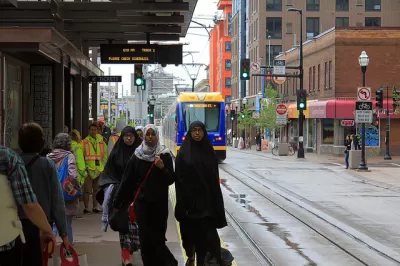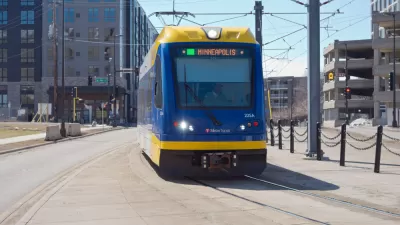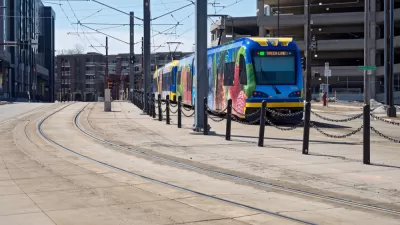A case study in how New Urbanist principles helped transform the neighborhood around the University of Minnesota in Minneapolis.

Chris Iverson begins a post describing the success of New Urbanism in Minneapolis by noting auto-oriented state of the neighborhoods around the University of Minnesota in 2006, when he first visited the area and noted the ability to drive through campus in a rental car while some 100 students waited to cross the street.
Iverson writes, however, of a new dynamic:
"Oh, how the times have changed for the better, especially around Minnesota’s Big Ten college. And even more specifically, how they have changed for Stadium Village & the Washington Avenue strip, a previously vehicle-torched, heavily overlooked faux-entertainment district into the poster child of New Urbanist principles within the entire state of Minnesota."
The article breaks down the evolution into periods of time, starting before 2009 with investments in retail offerings along Washington Avenue and the planning process for the Central Corridor (Green Line) light rail line to campus. Next, Iverson describes "the boom" of 2009-2014, when TCF Bank Stadium opened, mixed-use student housing opened at a brisk pace, and construction began on the Green Line. Iverson describes 2014-present as "New Urbanism Realized," with pedestrian, bike, and transit modes now safe and popular options and light rail ridership exceeding expectations.
The article concludes with a plea for more partnerships between the private, public, and institutional sectors to effect more changes such as those illustrated in the article in other parts of the city and state.
FULL STORY: Stadium Village is Minnesota’s Best New Urbanism

Planetizen Federal Action Tracker
A weekly monitor of how Trump’s orders and actions are impacting planners and planning in America.

Map: Where Senate Republicans Want to Sell Your Public Lands
For public land advocates, the Senate Republicans’ proposal to sell millions of acres of public land in the West is “the biggest fight of their careers.”

Restaurant Patios Were a Pandemic Win — Why Were They so Hard to Keep?
Social distancing requirements and changes in travel patterns prompted cities to pilot new uses for street and sidewalk space. Then it got complicated.

Platform Pilsner: Vancouver Transit Agency Releases... a Beer?
TransLink will receive a portion of every sale of the four-pack.

Toronto Weighs Cheaper Transit, Parking Hikes for Major Events
Special event rates would take effect during large festivals, sports games and concerts to ‘discourage driving, manage congestion and free up space for transit.”

Berlin to Consider Car-Free Zone Larger Than Manhattan
The area bound by the 22-mile Ringbahn would still allow 12 uses of a private automobile per year per person, and several other exemptions.
Urban Design for Planners 1: Software Tools
This six-course series explores essential urban design concepts using open source software and equips planners with the tools they need to participate fully in the urban design process.
Planning for Universal Design
Learn the tools for implementing Universal Design in planning regulations.
Heyer Gruel & Associates PA
JM Goldson LLC
Custer County Colorado
City of Camden Redevelopment Agency
City of Astoria
Transportation Research & Education Center (TREC) at Portland State University
Camden Redevelopment Agency
City of Claremont
Municipality of Princeton (NJ)




























